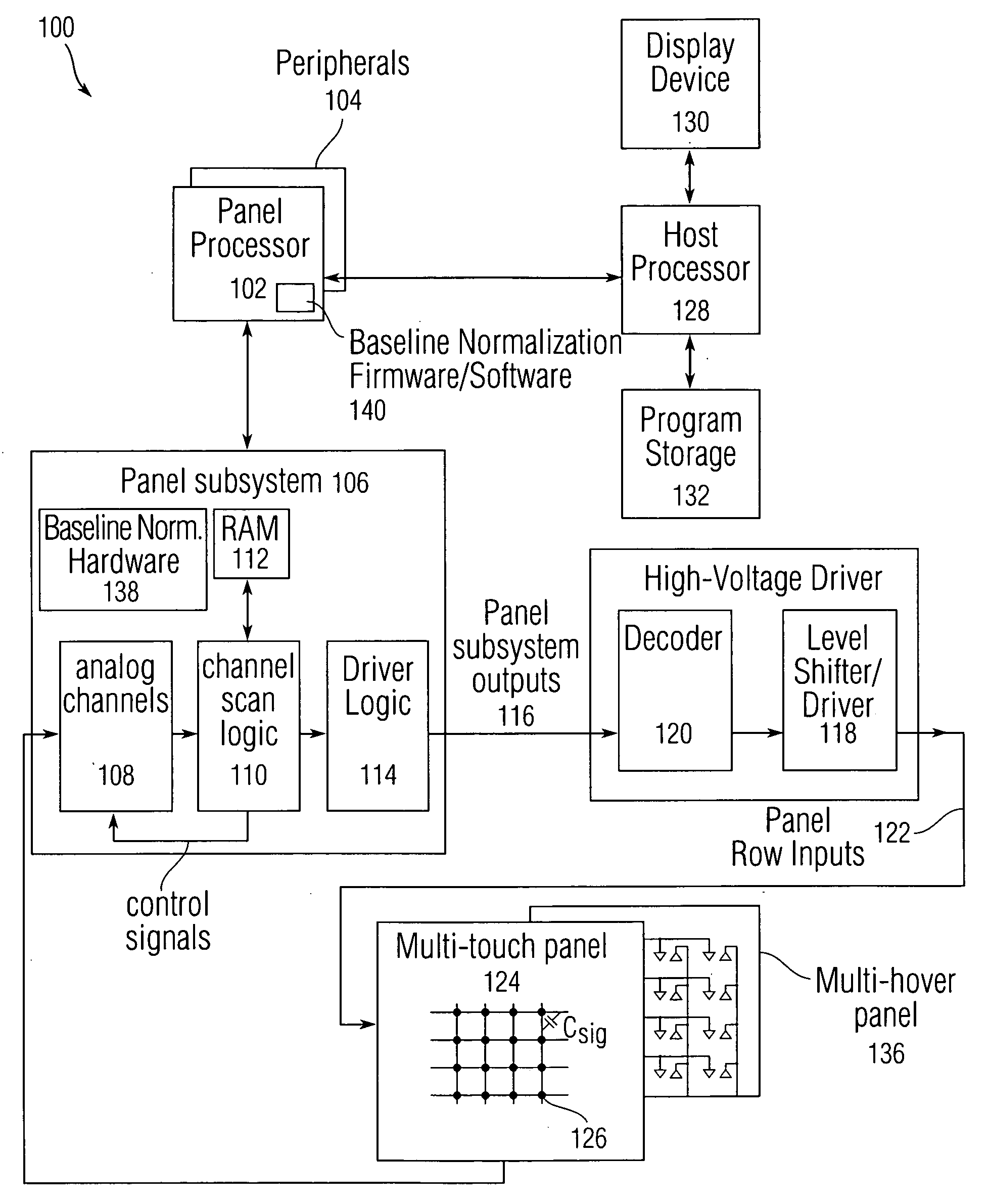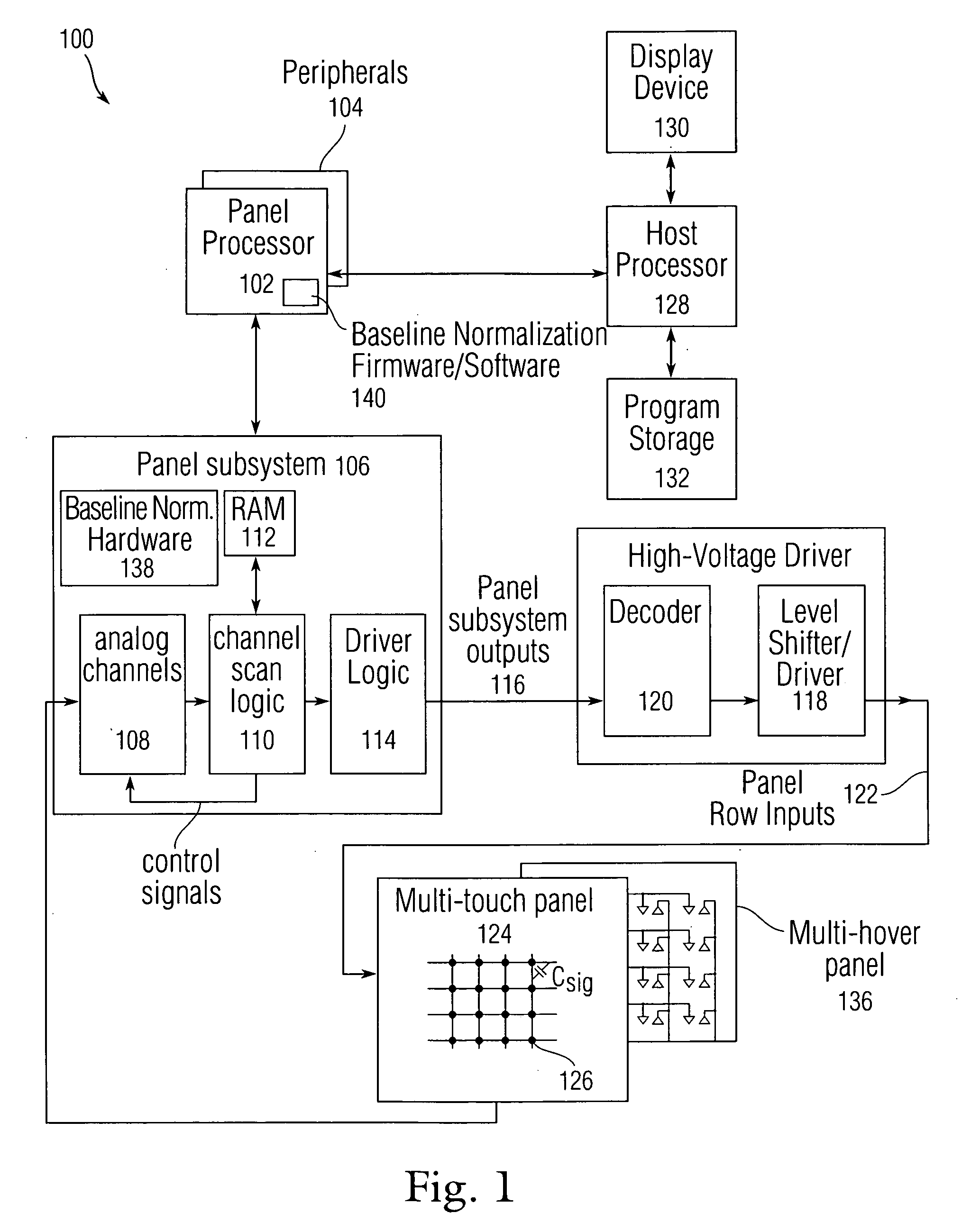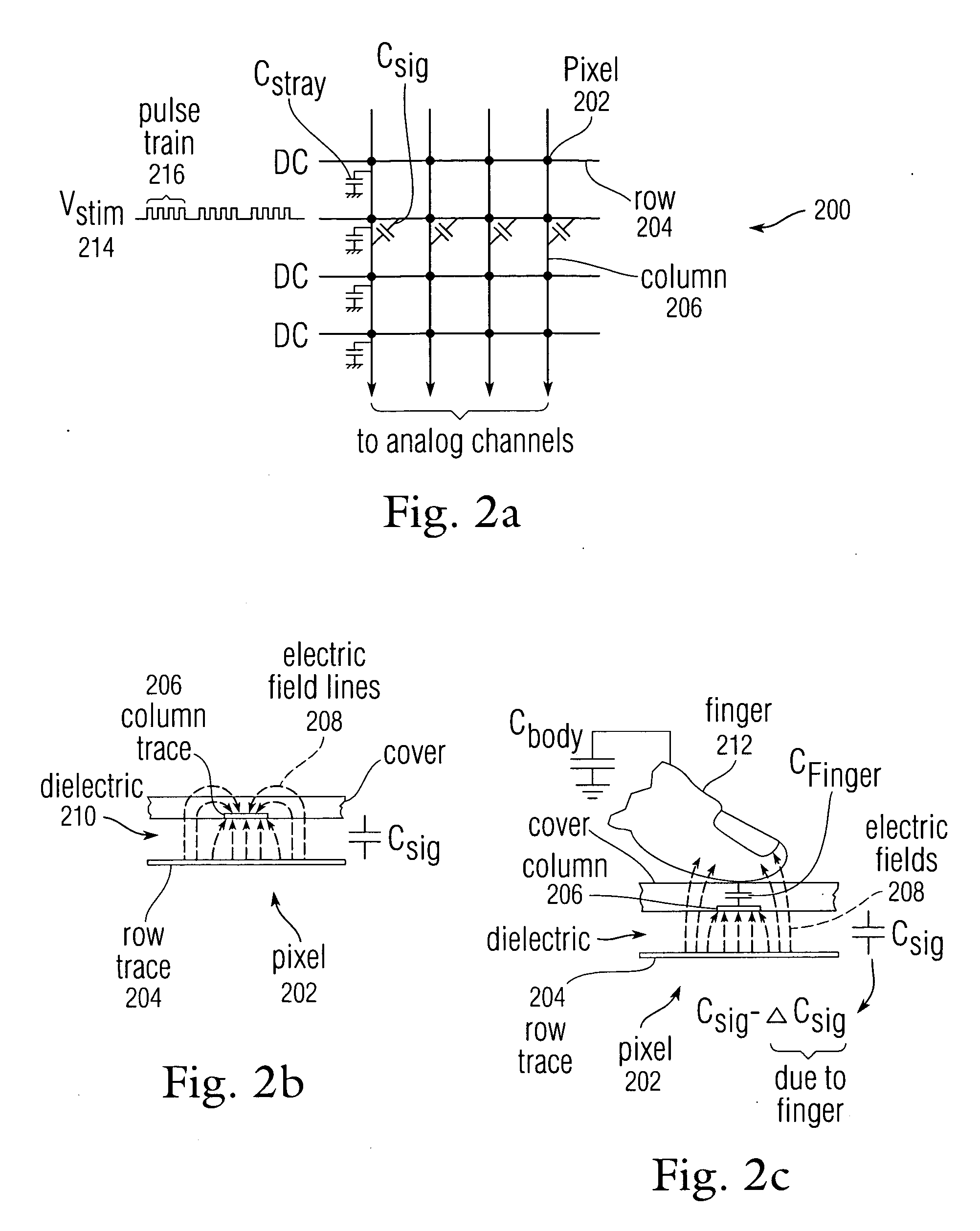Periodic sensor panel baseline adjustment
a baseline adjustment and sensor technology, applied in the field of panels, can solve the problems of inaccurate revision of the baseline, artificially lowering the baseline value of the raw outside sensor, etc., and achieve the effect of easy detection
- Summary
- Abstract
- Description
- Claims
- Application Information
AI Technical Summary
Benefits of technology
Problems solved by technology
Method used
Image
Examples
Embodiment Construction
[0040]In the following description of preferred embodiments, reference is made to the accompanying drawings which form a part hereof, and in which it is shown by way of illustration specific embodiments in which the invention may be practiced. It is to be understood that other embodiments may be used and structural changes may be made without departing from the scope of the preferred embodiments of the present invention.
[0041]Pre-stored no-touch or no-hover (no-event) sensor output values can initially be used when a sensor panel subsystem is first booted up to establish an initial baseline of sensor output values unaffected by fingers or other objects touching or hovering over the sensor panel during boot-up. This initial baseline can then be normalized so that each sensor generates the same output value for a given amount of touch or hover, providing a uniform response across the sensor panel and enabling subsequent touch or hover events to be more easily detected. After the initi...
PUM
 Login to View More
Login to View More Abstract
Description
Claims
Application Information
 Login to View More
Login to View More - R&D
- Intellectual Property
- Life Sciences
- Materials
- Tech Scout
- Unparalleled Data Quality
- Higher Quality Content
- 60% Fewer Hallucinations
Browse by: Latest US Patents, China's latest patents, Technical Efficacy Thesaurus, Application Domain, Technology Topic, Popular Technical Reports.
© 2025 PatSnap. All rights reserved.Legal|Privacy policy|Modern Slavery Act Transparency Statement|Sitemap|About US| Contact US: help@patsnap.com



